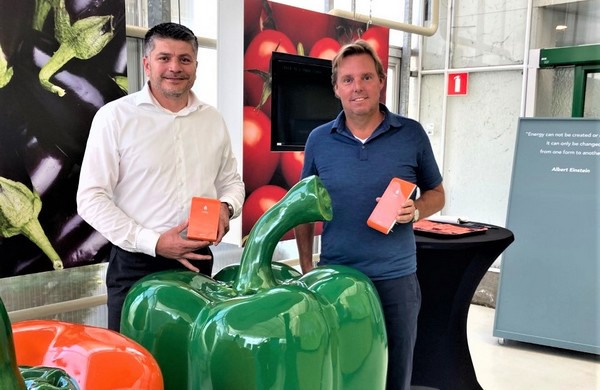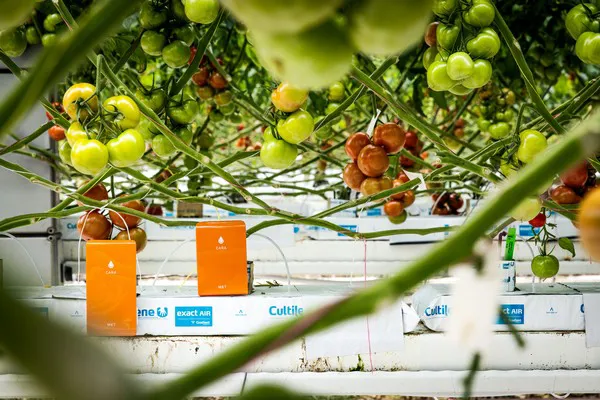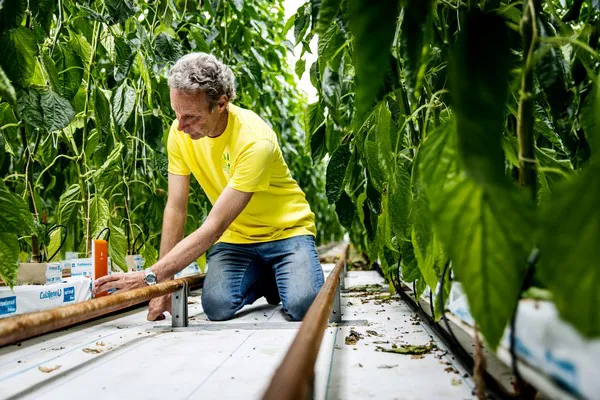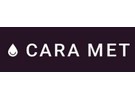These days, using cameras and sensors, you can measure all sorts of things in a greenhouse, but growers often cannot see what is going on with plants' roots. SenseNL is changing that. Their technology will enable farmers to record exactly what is happening in soil or substrate.
 Winelis Kavelaars and Bonny Heeren
Winelis Kavelaars and Bonny Heeren
It all began 15 years ago. Winelis Kavelaars founded SOWNet, a company specializing in wireless networks, now called IoT (Internet of Things). He was the first to use sensors to measure water content, EC, and temperature, and SenseNL was born. Bonny Heeren has experience in the global horticulture field, saw the potential of this technology, and joined the business to market these sensors.

Broadly applicable
The SenseNL platform is independent of climate computers and substrate. "So we're not excluding anyone," says Bonny. The sensor is currently already calibrated for rock wool, regardless of which company manufactured that substrate mat. "As we speak, it's being calibrated for coir, which will be done by the end of October. We're also working on the 'pot sensor' for container cultivation. A full soil sensor will follow."

You can link these sensors to your climate computer. "But we also have our own platform where you can see the data. We use Amazon's AWS cloud environment," Bonny continues. "That means you can scale the platform professionally, even when using lots of sensors. We use the Ericsson IoT Accelerator platform too, which lets you monitor the sensors and data communication."
More reliable readings
SenseNL's technology is not only well-liked in the horticultural sector, it is also popular with geotechnical researchers because it can take readings in higher ECs. That, too, is relevant for horticulturalists. "The current generation of sensors can reliably measure up to an EC of 3. That was good enough in the 90s. However, especially with tomato varieties, you can sometimes reach EC values of 12 nowadays," says Bonny.
Winelis explains how SenseNL manages that. "Sensors read permittivity and conductivity, measuring water content, EC, and temperature. These two quantities are interlinked, which makes it difficult to measure water content at higher ECs."
"Current technology uses these readings together, but SenseNL's R&D team has separated them, allowing for more reliable measurements in the higher ECs. Also, they developed an additional algorithm to refine that further."
Measures are information
SenseNL offers technology that not only allows growers to measure but also provides reliable information. "We can send the data over longer distances, but also in two directions," Bonny says.
"You can receive information from the sensor and remotely update it if you need to. Farmers need root zone readings. To get reliable information, you require multiple measuring points, because, in greenhouses, nothing is 100% uniform."
"You want a better idea of where your weak points are. Then, you can apply precision growing more effectively than if you have a single measurement point. To achieve this, SenseNL applies the motto: not one sensor per ten hectares, but ten sensors per one hectare," he concludes.
For more information: SenseNL B.V.
SenseNL B.V.
41F Ambachtsweg
2641 KT, Pijnacker, NL
Tel: +31 (0)85 876 8909
Email: [email protected]
Website: caramet.com
